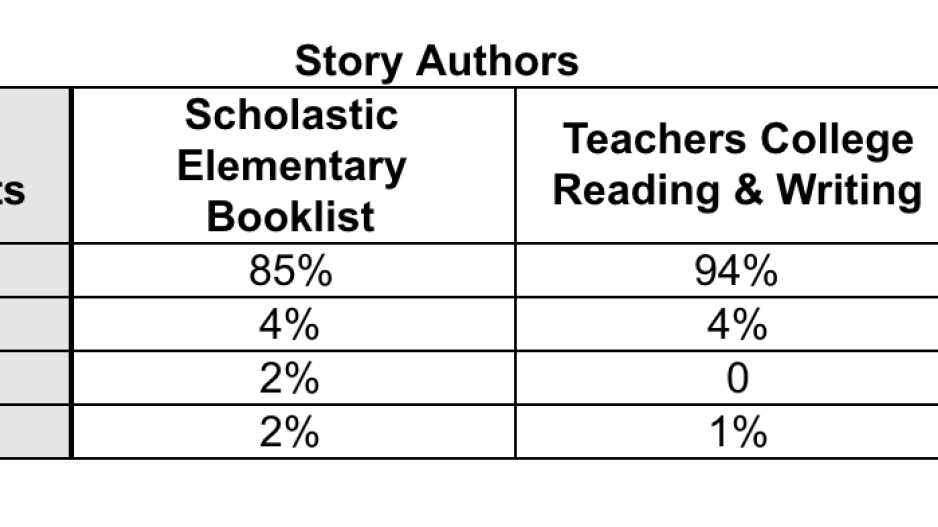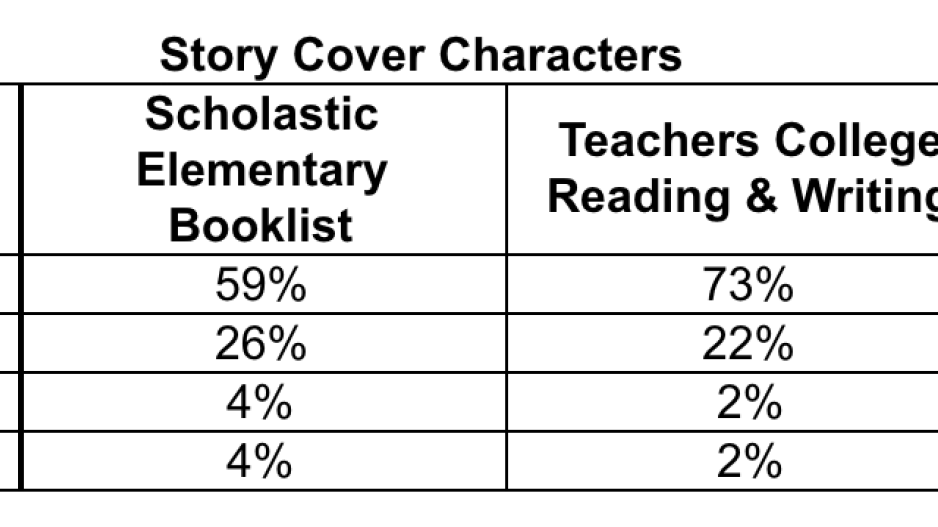By Megan Hester
Do an internet search for children’s books by or about people of color, and you will find dozens of lists with hundreds of books, including the 1,000 Black Girl Books compiled by 13-year old Marley Dias. In fact, if you search “children’s book author” together with any number of diverse ethnicities, in seconds you can find excellent books by and about people of those backgrounds.
The children’s book publishing industry is still dominated by White authors and White characters: only 15% of children’s books published in 2017 were by authors of color. However, because of the volume of the industry, that small percentage still represents 550 children’s books published by authors of color in 2017 alone and almost 3,000 books over the past decade. That is more than enough to find plenty of gems to populate a curriculum or book list.
How diverse are public school curricula and book lists?
This fall, at the request of the NYC Coalition for Educational Justice (CEJ), the NYU Metro Center analyzed three elementary school resources prominent in New York City schools:
- The Teachers College Reading and Writing Project (widely promoted by former Chancellor Fariña),
- The Pearson ReadyGen curriculum (the only elementary school curriculum recommended on the New York City Department of Education’s website),
- And the Scholastic booklist (regularly sent home in backpacks and promoted at parent-teacher nights and school events).
We wanted to see to what extent these commonly-used curricula represent the diversity of New York City students.
Finding 1: White authors are massively over-represented and authors of color are virtually absent.


These averages conceal even greater disparities for certain grades and identities:
- In the ReadyGen 4th grade curriculum, there are 10 White authors, 1 Black author, and no Latinx or Asian authors
- In the Teachers College 4th grade curriculum, there are 11 White authors and no authors of color
- In the central text of the Core Knowledge curriculum that the NYC DOE recommends for Pre-K, 8 out of 10 stories are of European origin
- Of the 42 books on the Scholastic elementary booklist, only 3 were written by women of color
Finding 2: The authors of curriculum materials are also overwhelmingly White.
Of the 67 contributing authors of the Teachers College Units of Study curriculum, it appears that 2 are African-American, 3 are Latinx, and 2 are Asian, while 60 (90%) are White. Four of the five (80%) named authors of the Pearson ReadyGen curriculum are White.
Finding 3: The cover images of the books -- which we used as a proxy for the central character -- had greater representation of Black characters, but White characters are still vastly over-represented, and Latinx and Asian characters are still virtually absent.

Even in books featuring characters of color, their stories are largely being told by White authors:
- 8 out of 10 cover characters of color in the ReadyGen curriculum were written by White authors
- 8 of 11 cover characters of color in the Teachers College curriculum were written by White authors
- All the cover characters of color in the Pre-K Scholastic booklist are written by White authors
Since this analysis in October, we have repeated it with several other commonly-used curricula and found the same pattern.
So why is public school curriculum still dominated by White authors and characters, when there are plenty of high-quality children’s books by and about people of color?
This type of White-dominated curriculum ignores decades of research showing that students learn best when they feel connected to the content of their learning, and when their own identities are reflected. Perhaps the best example of this is in Tucson, AZ, where students who participated in the Mexican-American Studies program had significantly greater test scores in math, reading, and writing and were significantly more likely to graduate from high school. They were more engaged in literature and history lessons, and more likely to have a positive perception of their ability to succeed in math and science. There are dozens of other studies from across the country showing similar results (see Browman, 2011; Butler-Barnes, 2017; Carter, 2008; Dee & Penner 2016; Morell, 2013).
Parents from CEJ released this curriculum analysis and are using it to highlight the prevalence of White-dominated curriculum and call for a revamp of public school curriculum to reflect the rich diversity of NYC students. In support of this effort, the NYU Metro Center will be releasing a Culturally Responsive Curriculum Scorecard that parents, educators, and students in NYC and across the country can use to evaluate the extent and manner in which their curriculum represents diverse populations.
Children’s books have traditionally played a role in socialization -- teaching children how to think, how to act, and how to feel about themselves, others, and the world. Unfortunately, the erasure, dehumanization, marginalization, and whitewashing of people of color have been a persistent part of that tradition. We live in a time when there is a wealth of beautiful, thoughtful and nuanced children’s books by and about people of color, and there is no reason for curriculum that doesn’t represent the identities and experiences of all children. Parents are calling on districts and curriculum publishers to step up.
Thanks to Charlotte Dubiel and Alyana Vera for their careful research on this project.

